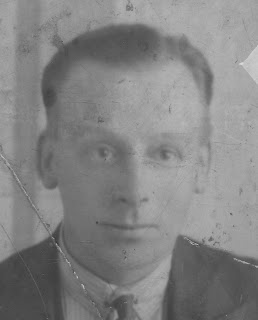Generally, one has more chance of locating an individuals medal card, than a service or pension record. The Medal Card Index (MCI) is a simple card which usually lists an individual's name, rank, regiment and medal entitlement. Some records do contain more information such as an address where the medals were sent, the date the individual joined their regiment and even the date they were discharged. Identifying the correct individual from the MCI can be tricky however, as common names can throw up literally hundreds of entries. In order to successfully identify the correct soldier, one would really need to know what regiment he served in or what his regimental number was. Unfortunately, this information is usually contained within the individual's service record, so without this information, the MCI can prove a bewildering and unwieldy source.
Due to the survivability of these records, one basically has more chance of sourcing and individual's medal card than their service record. Interestingly, the opposite proved true in the case of one of my great grandfathers.
My mother's paternal grandfather, Joseph Charles Nixon, served in the Cameronians (Scottish Rifles) from October 1915 until the end of the war. Prior to searching for his service record and medal card, my grandfather had told me that he served in Egypt, Palestine and the Western Front throughout his military career, being wounded and gassed several times during the conflict. My grandfather did not have any detailed information about the exact battles or campaigns in which he fought, as his father, Joseph (like many war veterans) did not like to speak openly about their experiences. My grandfather told me that the war had severely affected his father both physically and psychologically, and that much of his war experience was a mystery to the family.
I set about trying to find out more information for my grandfather and started with (what I thought!) would be the easiest source, the MCI. I was surprised to find that no details appeared when I search for a Joseph Charles Nixon, serving in the Scottish Rifles. I then widened my search to simply Joseph Nixon, dropping the middle-name, and finally to Charles Nixon, hoping that an army typo may be the cause of absent record. No results presented themselves, so in desperation, I widened the search even more to a simple search for all NIXONs serving with the Scottish Rifles. I was presented with several individuals, but as no biographical details are included in the MCI, I was no further forward. I began to suspect that my grandfather had possibly been mistaken about the name of his regiment or that some other administrative error had occurred when the records were compiled. Unfortunately for the genealogist, both issues regularly arise! It turns out, that I should have had more faith in my Granda!
On one of my regular research trips to the National Archives in Kew (this was prior to records being digitised), http://www.nationalarchives.gov.uk/ I attempted to locate his service record. I was very excited to find that, against the odds, his service record had survived the Arnside fire! I knew immediately that it was him as his address and age matched exactly with my grandfather's information and data held in the census records.
I uncovered over 17 pages worth of information detailing his entire military career from his attestation on 7 October 1915 right through to the end of the war. I learned that he had indeed served in the Scottish Rifles, and moved battalions throughout his career. As my grandfather advised, he had indeed served in Egypt, Palestine and finally transferred to the Western Front in the Spring of 1918. The service record revealed that he had been gassed in May 1918 during the final German Offensive, popularly known as the 'Kaiserschlacht' (Kaiser's Battle). He had also been shot through the left wrist during the final Allied Offensive in September 1918. For his wounds, he was granted a pension and a Silver War Badge, signifying that he had been wounded in combat.
I checked his regimental number, or service number, and found that he was given two during his career. I knew that this usually signified a change of battalion or unit, but the two numbers given were 2948 and 266093.
I returned to the MCI and again searched for all NIXONs present and quickly discovered that an administrative error had indeed taken place. One of the records in the MCI referred to a Scottish Rifles soldier by the name of John C. Nixon who had received the Silver War Badge. A quick glance at the top of the record revealed the two service number 2948 and 266093. This was my great grandfather!
So, a seemingly 'lost' record was quickly located when used in conjunction with the main service record. Of course as we have seen, I was very fortunate to locate Joseph's service record in the first place. Without this and by not knowing his service number, details of his military career could have been potentially lost forever. And all of this caused by the careless recording of a War Office clerk! It just proves that not matter how 'official' and trustworthy records appear to be...they can always be misleading or completely wrong! Check, check and double-check!
If you have a military genealogy query or you've hit a 'brick wall' in your own research, I can help.
Please feel free to email me at scotiaroots@btinternet .com and I will provide you with a free quotation.
